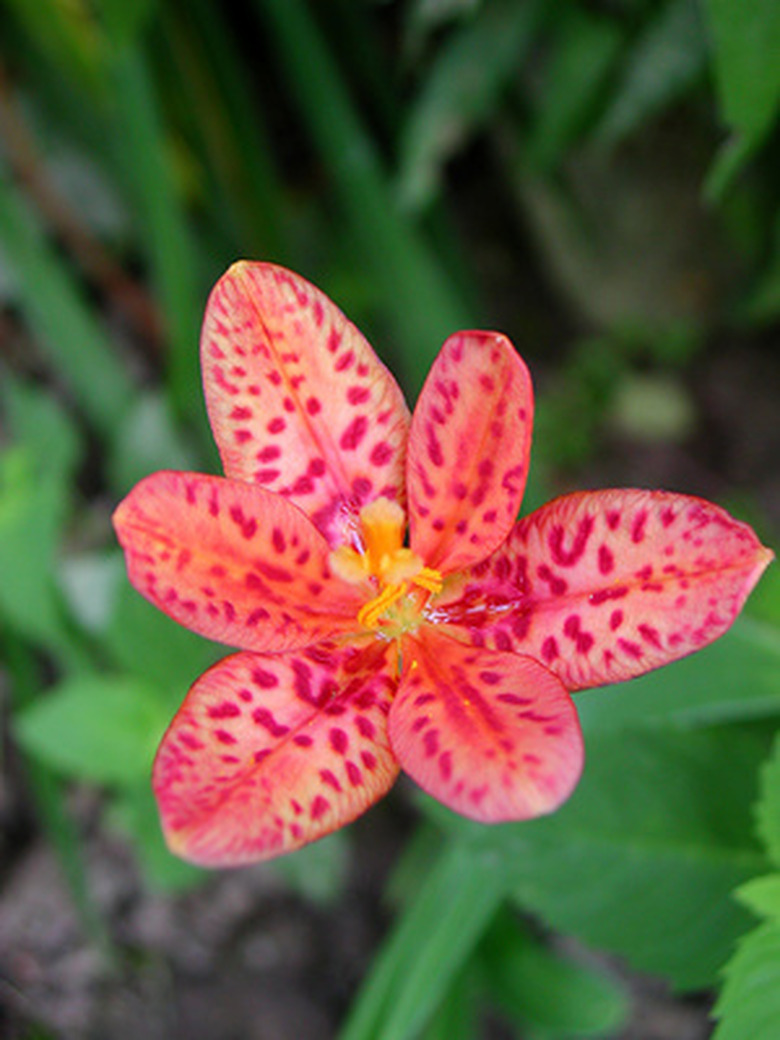Toad Lily Plant
The toad lily plant (Tricyrtis sp.) is an herbaceous perennial native to eastern and southeastern Asia. The plant is desirable for its ability to bloom in the shade and for the fact that it blooms in late summer to early fall, a time of the year when many flowers are fading away. There are 16 species of the toad lily, each with many cultivars, each one with small, unique, orchid-like blooms of different colors and patterns.
Appearance
Toad lilies range in height from one to three feet, with gently curving stems. They spread through rhizomes, or underground, horizontal roots, and are attractive when planted in groups. The flowers bloom on thin stems that rise up vertically from the masses of bright green or variegated, ovate leaves. Some cultivars have golden leaves. The flowers feature three inner tepals (modified petals) and three outer tepals. In most cultivars, the flowers are a shade of yellow, pink or purple. Sometimes they are creamy-white, with purple or yellow splotches or speckles. In fact, the "Speckled Toad" variety is so named for its flowers, which feature dark purple speckles on a white background.
- The toad lily plant (Tricyrtis sp.)
- There are 16 species of the toad lily, each with many cultivars, each one with small, unique, orchid-like blooms of different colors and patterns.
Climate
Toad lilies are hardy to United States Department of Agriculture (USDA) growing zone 5b, according to a study conducted by Richard Hawke, manager of plant evaluation programs at the Chicago Botanic Garden. Severe damage to the plants or death occurs when they are exposed for extended periods of time to temperatures below 28 degrees Fahrenheit. The plants will often continue to bloom well into November as long as they are not subjected to a hard frost. Afterward, they enter a dormant period, to sprout again in the spring in temperate climates.
Culture
Toad lilies thrive in cool, loamy, moist soil that is rich in organic matter. Unlike many blooming perennials, these plants thrive in partial shade and will even bloom in full shade, although not as prolifically as plants that receive a few hours of sunlight. Plants exposed to full sun may experience scorching of the leaves. The soil should be kept consistently moist if toad lilies are to grow well, and they can be fertilized in the spring with a fertilizer formulated for lilies.
- Toad lilies are hardy to United States Department of Agriculture (USDA) growing zone 5b, according to a study conducted by Richard Hawke, manager of plant evaluation programs at the Chicago Botanic Garden.
- The soil should be kept consistently moist if toad lilies are to grow well, and they can be fertilized in the spring with a fertilizer formulated for lilies.
Uses
These plants naturalize well in cool, shady areas and are very attractive when planted in groups in woodland areas, according to Mr. Hawke. They can also be planted as a border plant in perennial gardens and are well paired with other fall-blooming, shade-loving plants such as hostas and astibille. Ferns also make excellent frames for the delicate foliage and flowers of toad lilies.
Problems
Toad lilies are relatively pest and disease resistant, but they can suffer from anthracnose, a fungal disease that is signified by the development of small orange spots on the lower stem and leaves of the plant. Over time, the spots will migrate up the plant and may deform the leaves or merge into raised brown lesions, causing the leaves to drop from the lily. Anthracnose can be avoided by watering at the base of the plant and keeping the leaves dry. An application of fungicide in the spring can also reduce the chances of the disease developing. Rabbits love toad lilies and will decimate an entire planting if the lilies are not fenced.
- These plants naturalize well in cool, shady areas and are very attractive when planted in groups in woodland areas, according to Mr. Hawke.
- Toad lilies are relatively pest and disease resistant, but they can suffer from anthracnose, a fungal disease that is signified by the development of small orange spots on the lower stem and leaves of the plant.
